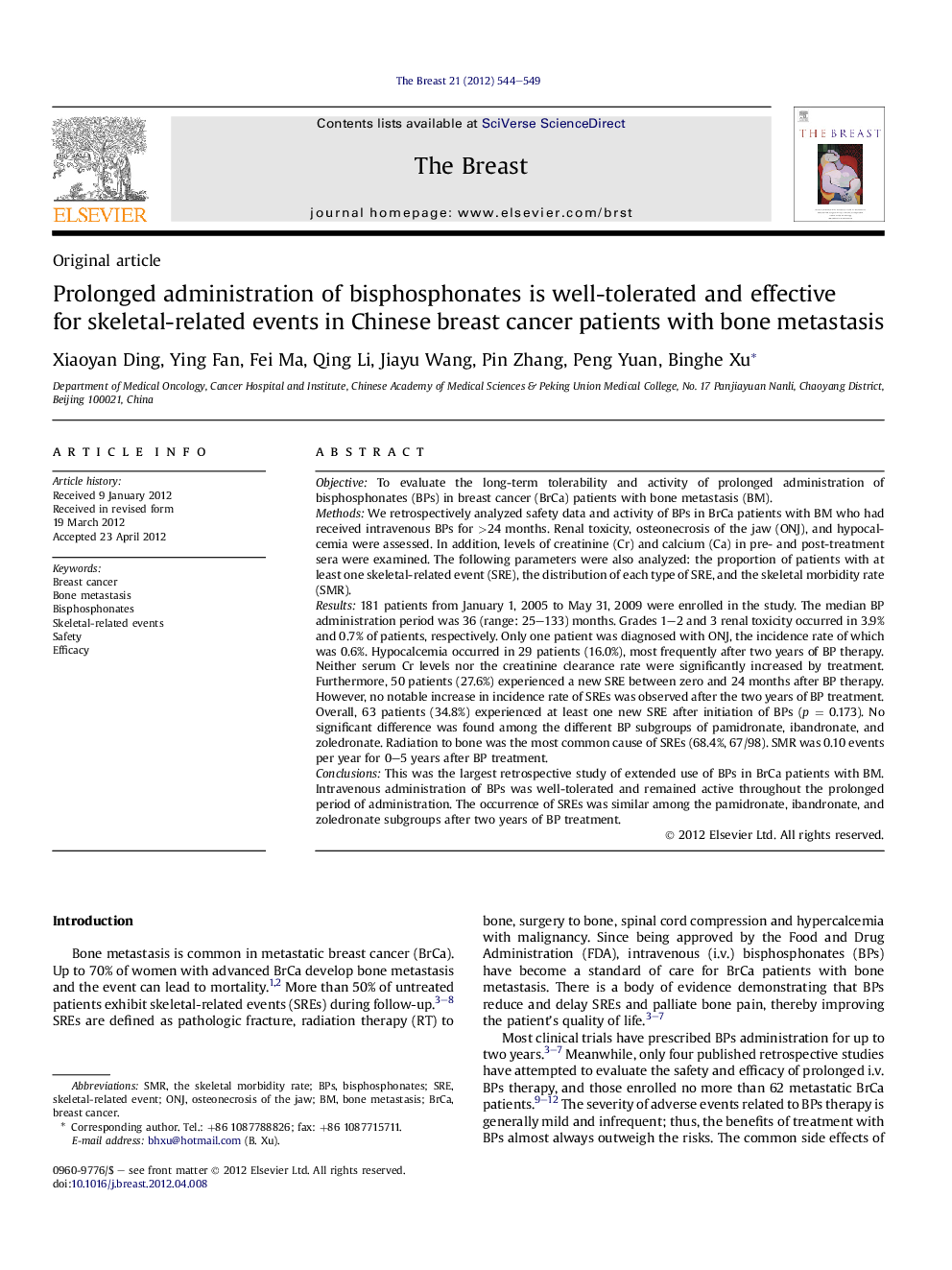| Article ID | Journal | Published Year | Pages | File Type |
|---|---|---|---|---|
| 3908643 | The Breast | 2012 | 6 Pages |
ObjectiveTo evaluate the long-term tolerability and activity of prolonged administration of bisphosphonates (BPs) in breast cancer (BrCa) patients with bone metastasis (BM).MethodsWe retrospectively analyzed safety data and activity of BPs in BrCa patients with BM who had received intravenous BPs for >24 months. Renal toxicity, osteonecrosis of the jaw (ONJ), and hypocalcemia were assessed. In addition, levels of creatinine (Cr) and calcium (Ca) in pre- and post-treatment sera were examined. The following parameters were also analyzed: the proportion of patients with at least one skeletal-related event (SRE), the distribution of each type of SRE, and the skeletal morbidity rate (SMR).Results181 patients from January 1, 2005 to May 31, 2009 were enrolled in the study. The median BP administration period was 36 (range: 25–133) months. Grades 1–2 and 3 renal toxicity occurred in 3.9% and 0.7% of patients, respectively. Only one patient was diagnosed with ONJ, the incidence rate of which was 0.6%. Hypocalcemia occurred in 29 patients (16.0%), most frequently after two years of BP therapy. Neither serum Cr levels nor the creatinine clearance rate were significantly increased by treatment. Furthermore, 50 patients (27.6%) experienced a new SRE between zero and 24 months after BP therapy. However, no notable increase in incidence rate of SREs was observed after the two years of BP treatment. Overall, 63 patients (34.8%) experienced at least one new SRE after initiation of BPs (p = 0.173). No significant difference was found among the different BP subgroups of pamidronate, ibandronate, and zoledronate. Radiation to bone was the most common cause of SREs (68.4%, 67/98). SMR was 0.10 events per year for 0–5 years after BP treatment.ConclusionsThis was the largest retrospective study of extended use of BPs in BrCa patients with BM. Intravenous administration of BPs was well-tolerated and remained active throughout the prolonged period of administration. The occurrence of SREs was similar among the pamidronate, ibandronate, and zoledronate subgroups after two years of BP treatment.
